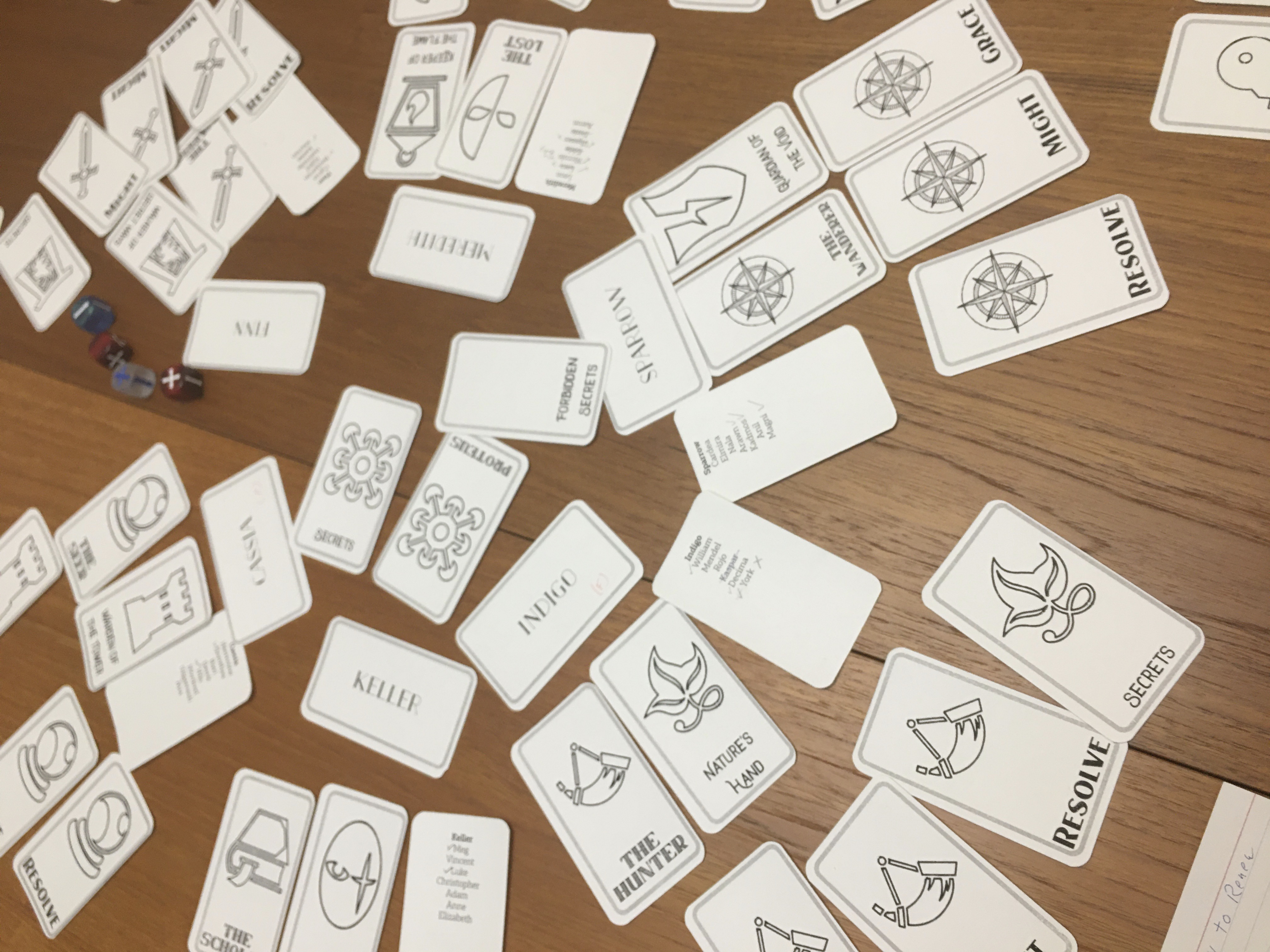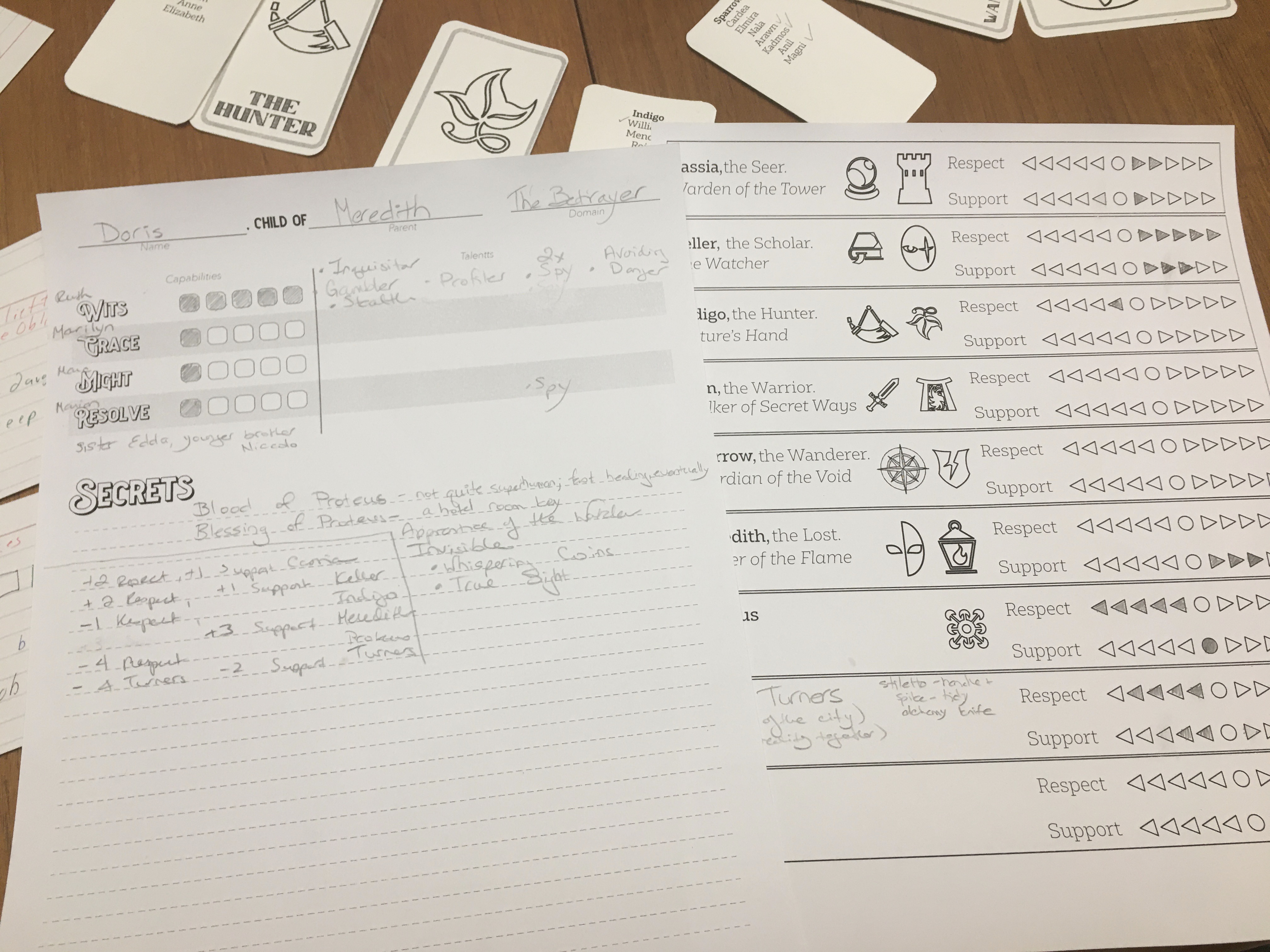The Warlock has made a pact with one of the Imprisoned, powerful entities who have been sealed away for all time for one reason or another. Their motives and appearances are greatly varied – some are evil beings banished for their crimes. Others may have simply made the wrong enemies. Naturally, if asked, each of them can explain how they were wrongly imprisoned, but that’s unimportant – what matters is how they can help you.
Expanded Spell List
| Spell Level | Spells |
|---|---|
| 1st | Comprehend Languages, Expeditious Retreat |
| 2nd | Knock, Rope Trick |
| 3rd | Sending, Nondetection |
| 4th | Freedom of Movement, Locate Creature |
| 5th | Legend Lore, Planar Binding |
Dangerous Channelling
Your patron gives you access to extra power which is dangerous to wield. When you successfully hit a target with a damaging spell or cantrip, you may roll an extra two six sided dice. You may assign one of them as extra damage to the target, and the other as damage to yourself.
The damage type is the same as the original effect, and if the warlock has any effects which reduce that damage type, it is applied to both dice.
If the spell has multiple targets, this can only be applied on one of them.
At 10th level, you may roll two eight sided dice. At 18th level you may roll two 10 sided dice.
Energizing Ward
Starting at 6th level, you can turn some of the energy of attacks against you to your advantage. When you are struck by an attack doing fire, cold or electrical damage, then you may activate your ward as a reaction. The ward grants you resistance to that damage type for one round (or immunity, if you already have resistance).
If this reduces damage, and you use Dangerous Channelling within one round, you apply both dice as damage to the target, and none to yourself. In this case the extra damage is of the type prevented
Once you use this feature, you can’t use it again until you finish a long or short rest.
Puppet Strings
Beginning at 10th level, your Patron can guide your body when you are unable to do so. When you are restrained, stunned or paralyzed, attack rolls against you are not granted advantage by the status. You receive advantage on saves when incapacitated, paralyzed, stunned or uncocious.
Elemental Chains
Starting at 14th level, when you hit a creature with a spell attack, you may bind it with chains of power. It must make a will save against you warlock spell DC or be restrained for one minute or until your concentration is broken. As a bonus action on your turn you can inflict 1d6 force damage to the subject while they’re restrained.
Pact Boon
There’s little mechanical impact on the Pact Boon that comes from the Imprisoned rather than some other patron. However, just as with other pacts, the its appearance and style are impacted by the patron.
Pact of the Chain
The familiar granted by the Pact in the Chain, sometimes called The Whisperer, sometimes serves as a channel for the Imprisoned, giving them a fraction of autonomy to pursue their goals. These familiars may speak and offer helpful – always helpful – advice.
Warlocks who choose the homunculus familiar may choose a different appearance – a colorful, segmented worm. This uses identical stats to the homunculus, but flight speed is replaces with 20′ burrowing speed.
Pact of the Blade
The blade often reflects something of the patron’s nature, but in some cases may more explicitly reflect some nature of its captivity. Blades with a lock or key motif, or even the suggestions of a key’s shape in its blade, are not uncommon.
Pact of the Tome
The book of shadows gifted by the Imprisoned often includes some number of (sometimes changing) maps which the Imprisoned, regretfully, cannot speak to directly.
For the DM
The appearance and nature of the Imprisoned is incredibly varied. Ancient archmages, bound deva’s, dragons of colors or metals which no longer exist – all these things are possible. You and the player may want to talk a little bit about the appearance and demeanor of the imprisoned.
One guideline to this end is that the Imprisoned will unceasingly present themselves as helpful. As an ally. Someone looking out for the character. It’s even possible this is true, but there is reason to be wary. This is a powerful, frustrated being, and the Warlock is the thread it is grasping at in hopes of freedom. Even if they have ulterior motives, they aren’t going to risk alienating the Warlock and losing their chance.
Any Imprisoned will describe their imprisonment as wrong, and those who did it as villains. This is just to be expected, and again may even be true. Or even if untrue, they may sincerely believe it.
This does lead to one kind of important warning about this kind of patron – depending on the circumstance, they may be very manipulative. Specifically, they are incentivized to create a relationship where the warlock is dependent on them, which may lead to a lot of tactics, like gaslighting, which players may not be comfortable with.
If this warning seems odd (after all, playing a warlock of Cthulhu, or Moloch the slaughterer is par for course), please consider – this is not about squeamishness around evil, but rather about things that people encounter in their lives. Great old ones and fiendish monsters are safely in the realm of fiction, but emotional manipulation and harm are things that people have to deal with in their lives. ‘
So, with that in mind, make sure everyone’s clear about how this will play. If the expectation is that the GM will be manipulative in play, then make sure people explicitly buy in. Alternately, if everyone knows out of character that this is manipulation, and the decision to be manipulated is to be a character action, that’s fine too. Just be clear.
Other Notes
I’m not totally happy with Elemental Chains, so I’m going to noodle on that a bit. Obviously, need to test this out a bit, so consider this a work in progress – feedback welcome. I keep being tempted to do an entirely warlock centered 5e book at some point, because Warlocks are just that much fun.



